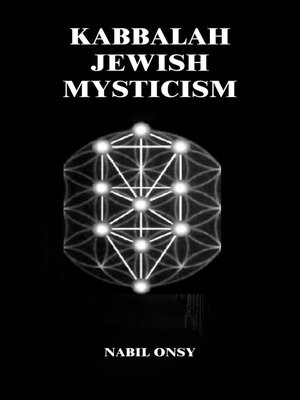
Sign up to save your library
With an OverDrive account, you can save your favorite libraries for at-a-glance information about availability. Find out more about OverDrive accounts.
Find this title in Libby, the library reading app by OverDrive.



Search for a digital library with this title
Title found at these libraries:
| Library Name | Distance |
|---|---|
| Loading... |
In my pursuit to enrich the library with works that shed light on Jewish Mysticism, including the profound esoteric wisdom of Kabbalah, I gathered my pens and papers, I devoted myself to translating these texts over an extended period, hoping that my efforts would bear meaningful fruit, It is my heartfelt desire that every seeker of knowledge may find both benefit and inspiration within these pages.
Jewish Mysticism seeks an intimate encounter with God, with roots deeply embedded in history. However, organized Jewish Mysticism began in France and Spain.
Kabbalah strives to bridge the gap between the material world we inhabit and the God realm, aiming to create harmony between them. Central to Kabbalah are the ten Sefirot (עשר סְפִירוֹת), which form the foundation of this mystical tradition. These Sefirot represent the Ten Divine Emanations (האצלה) or the Ten Divine Transfigurations.
The first Kabbalistic book is Sefer HaBahir (ספר הבהיר / Book of Illumination), which emerged in Provence at the end of the 12th century CE. The principal book of Kabbalah, however, is Sefer HaZohar (ספר הזוהר / Book of Splendor), which appeared at the end of the 13th century CE. The significance of Ha Zohar grew especially after the expulsion of the Jews from Spain.
Following the expulsions at the beginning of the 16th century, the city of Safed became the spiritual center of the Jewish people, surpassing Jerusalem. Many great Kabbalists gathered there, among whom Rabbi Isaac ben Solomon Luria (יצחק בן שלמה לוריא ), known by the acronym Ha'ari (האר"י), was the most prominent. Another key figure was Rabbi Moses ben Jacob Cordovero (משה קוֹרְדוֹבֵירוֹ ), known as Ramak (רמ״ק). These scholars focused primarily on the soul and astrology and played a crucial role in making Kabbalah accessible beyond the nobility, transforming it into a teaching for all. Since then, Safed has remained the enduring city of Kabbalah.







